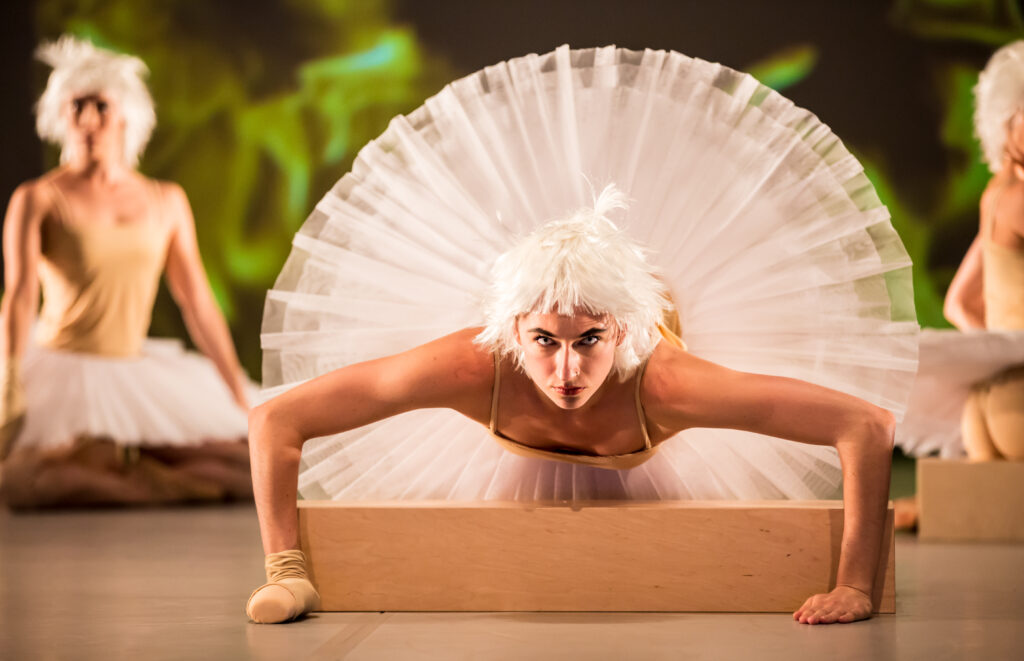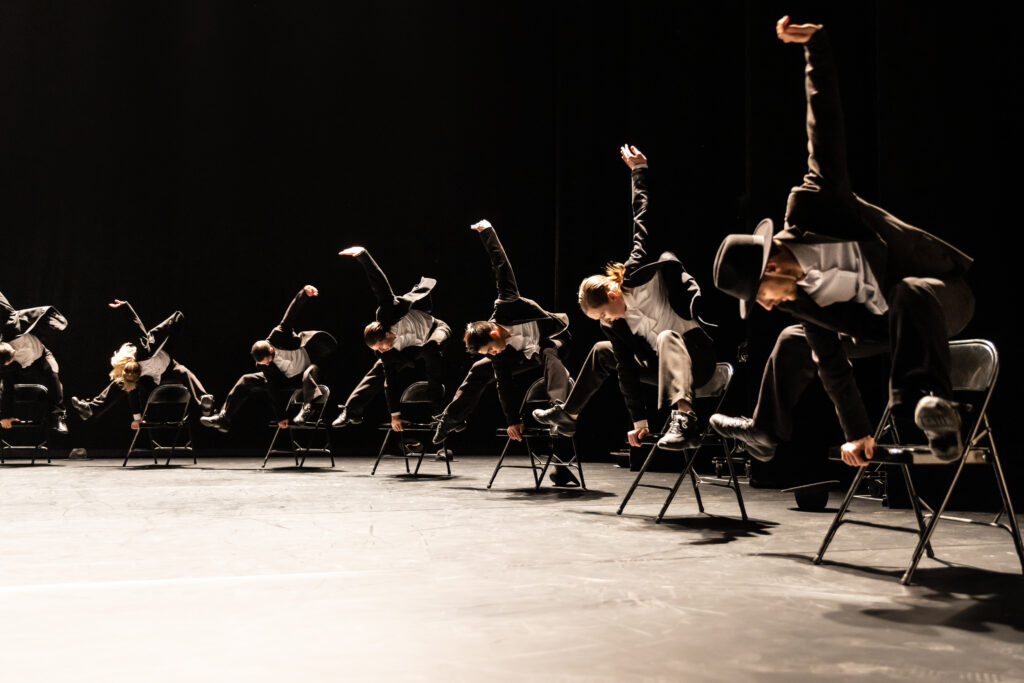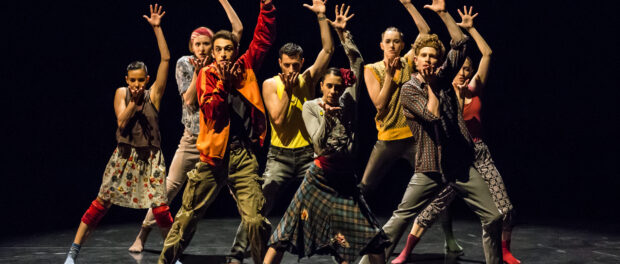Danse Gauthier brings Theaterhaus Stuttgart to Montreal with an exhilarating triple bill
Featuring reinterpretations of Swan Lake by Marie Chouinard and Hofesh Shechter, as well as Ohad Naharin's Minus 16
Dance Company Theaterhaus Stuttgart, under the artistic director of Quebec’s own Eric Gauthier, wowed Montrealers with two reinterpretations of Swan Lake, by Marie Chouinard and Hofesh Shechter respectively, as well as a classic by “Mr. Gaga,” Ohad Naharin.
The first piece on the program, LE CHANT DU CYGNE: LE LAC, by Marie Chouinard, opens with huge flames of fire projected onto the backdrop. Against an electronic soundtrack a lone dancer crawls on all fours across the stage, appearing to be near death. Is it a comment on global warming? Or Yeats’s “rough beast,” slouching “towards Bethlehem to be born”? The other dancers join in the deadly crawl, eventually lying down next to the flames. But the action then picks up: the dancers, wearing rigid white circles that make a mockery of tutus, and a pointe shoe on their right hands, all in white fluffy wigs, get on their feet and make their way stiffly across the stage, eventually engaging in more fluid motions and dancing en masse or in small groups. Often they move en pointe on one foot only, the other foot flat; that, along with the pointe-clad hand that often acts as a sort of periscope or antenna (or maybe the neck and head of a swan?), give the impression that their bodies are broken or harmed. This all makes sense when all of a sudden the fires go out, the lighting becomes bright white, and the dancers stand in lines and begin to perform the Chilean feminist performance art piece El violador eres tù (The Rapist is You), a piece that protests violence against women. So maybe Yeat’s Second Coming, mentioning as it does that “The ceremony of innocence is drowned,” is a propos. One thing is certain, though: the swan’s song is scream of rage.
In the second work, SWAN CAKE, Hofesh Shechter gives us pure unbridled energy, combining street and popular dance styles with more complex modern dance movements, all to a score of his own creation. The dancers wear different kinds of street clothing, and the net effect is that of an improvised outpouring of humanity expressed through sound and movement. The connection to Swan Lake is somewhat mysterious, but the work is exhilarating on its own regardless.

The third and final work, Ohad Naharin’s Minus 16, which puts together excerpts of various works by the choreographer, begins during the intermission. As people make their way back into the theatre, a lone dancer, dressed in black pants and a white shirt, is performing with the house lights on. He does flips, he does the splits, he does leaps and pirouettes and the mambo. The audience occasionally claps but isn’t fully paying attention. Eventually the dancer puts on his black jacket, and the stage fills up with other dancers dressed similarly, and the piece begins. The dancers seat themselves on chairs arranged in a semi-circle, and Hebrew verses from the Passover Haggadah are sung/shouted. At regular intervals the dancers arch their backs in a wave beginning on the left and sweeping around to the right; the last dancer on the right throws himself onto the ground. The effect is visually stunning. This framework is repeated multiple times; eventually the dancers start removing articles of clothing and throwing them into a big pile in the middle, until they are wearing only flesh-coloured underwear. At that point Naharin moves onto other pieces from his repertoire, including improvisation in the Gaga tradition that he founded. At one point the dancers (now dressed again) descend into the audience and pull people onto the stage, dancing with them for several minutes before finally releasing them. Different scenes follow, with the audience on several occasions thinking the piece is over and standing for an ovation, only to realize that more fun is coming. Like Shechter’s work, Minus 16 seems to be a celebration of dance, of movement, of breaking down barriers, of joy and life.

Theaterhaus Stuttgart was at Théâtre Maisonneuve from May 1-4.






